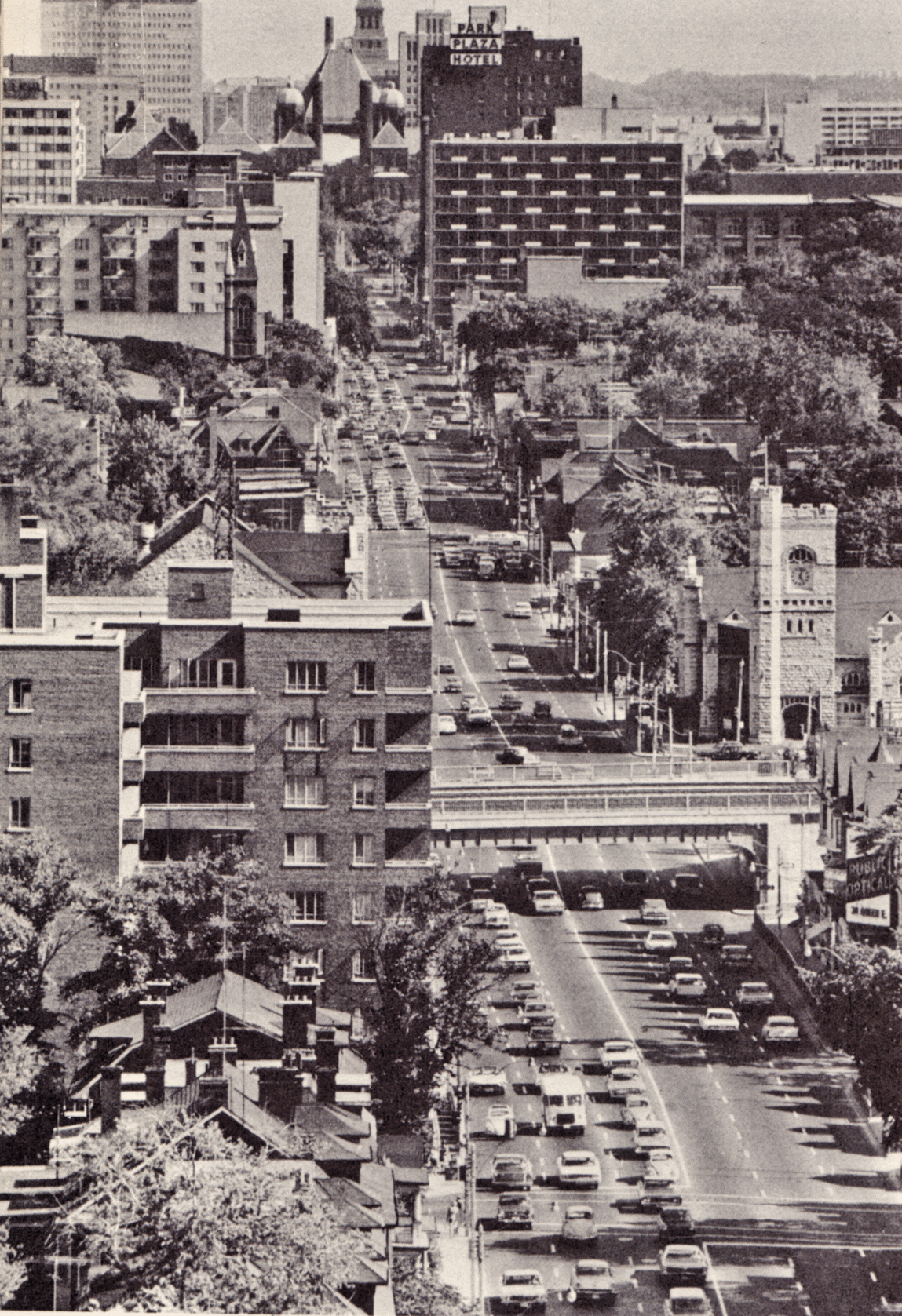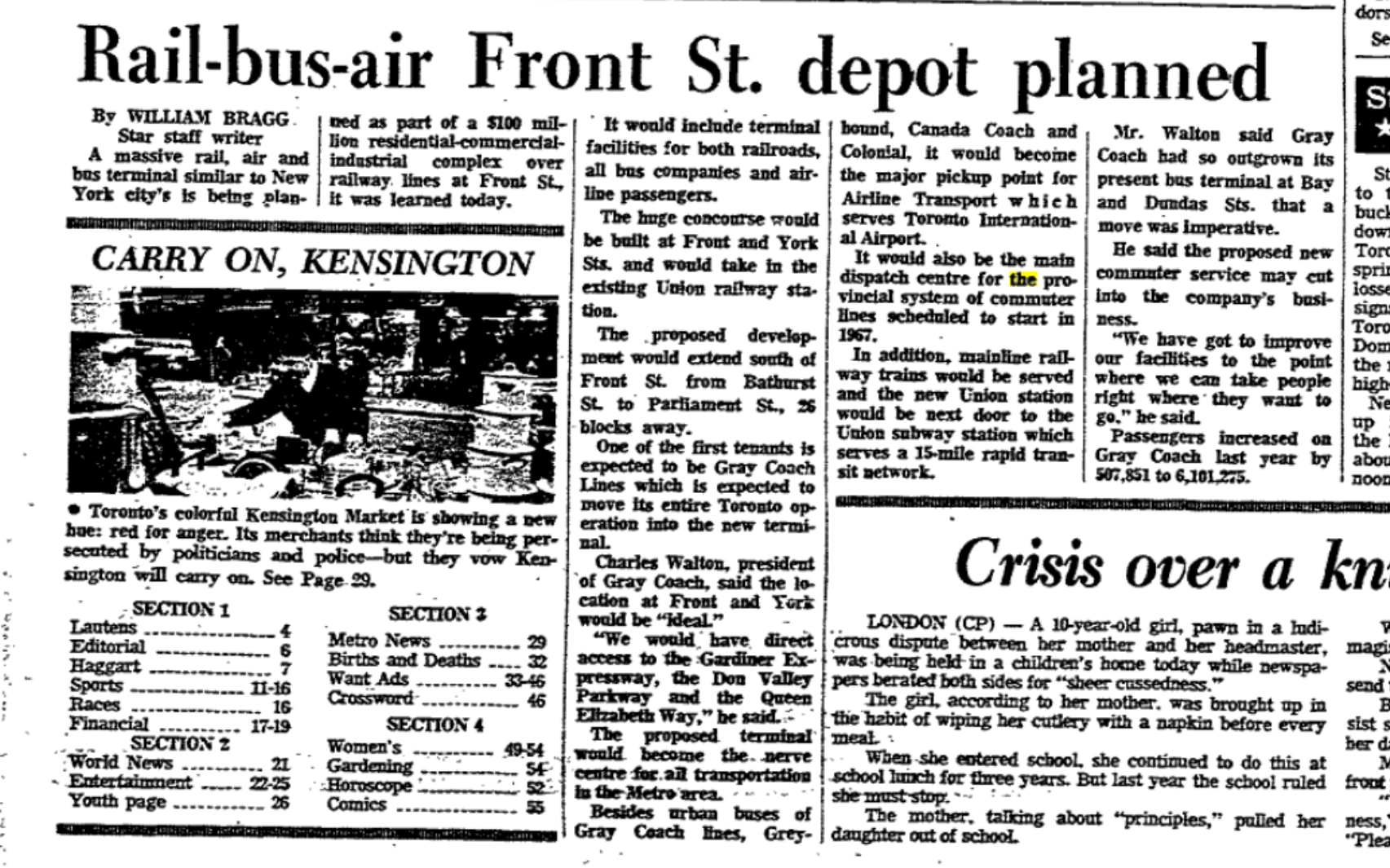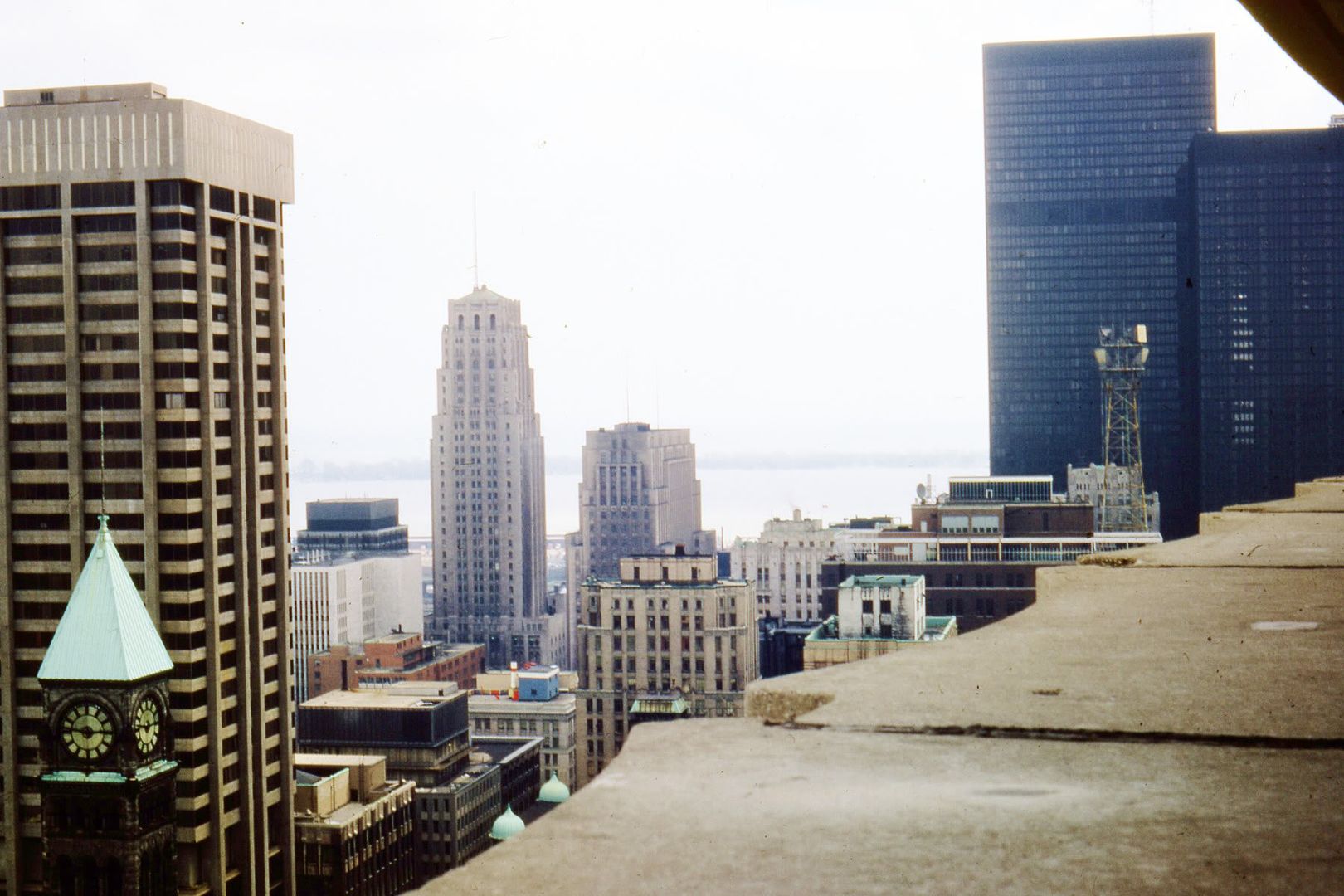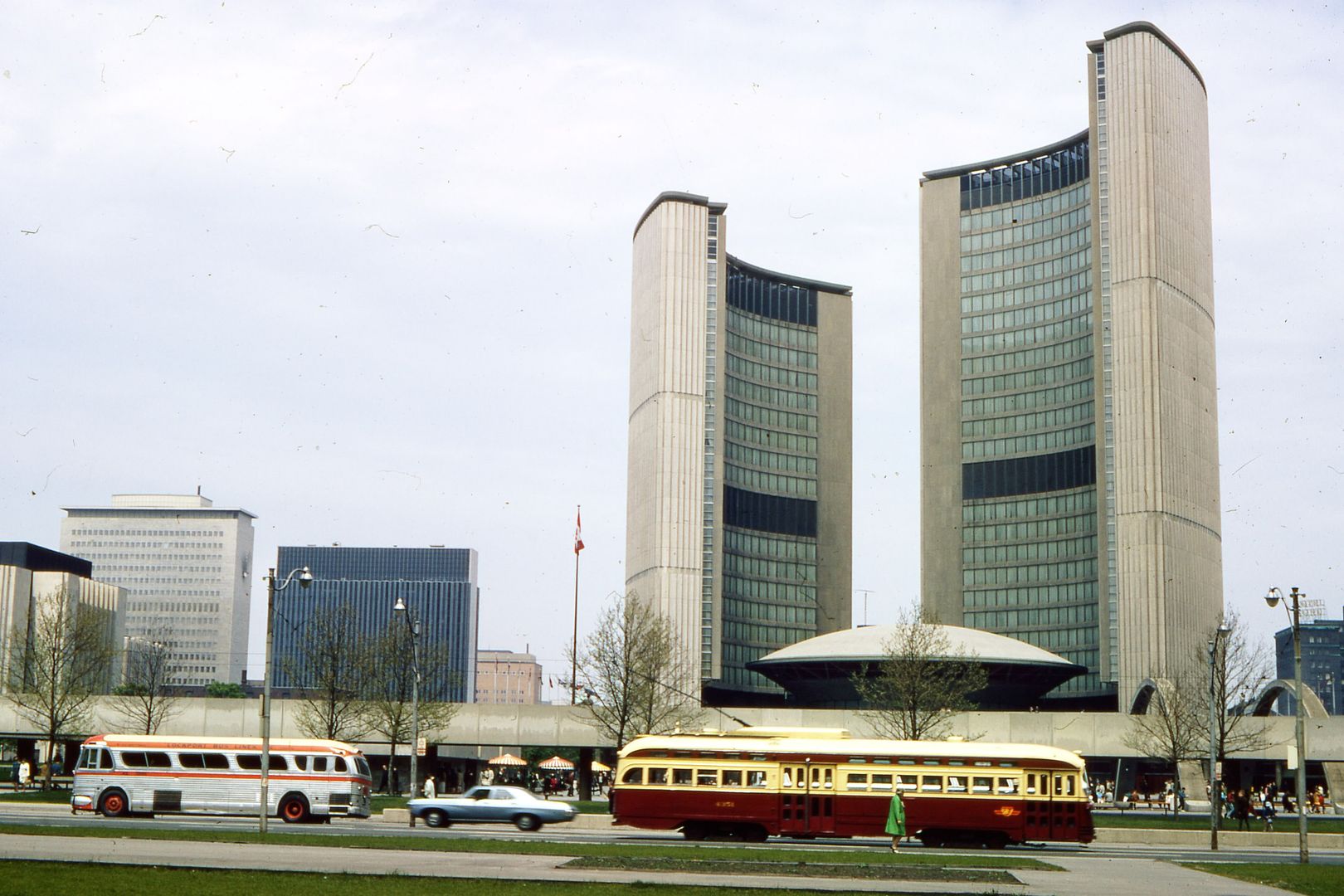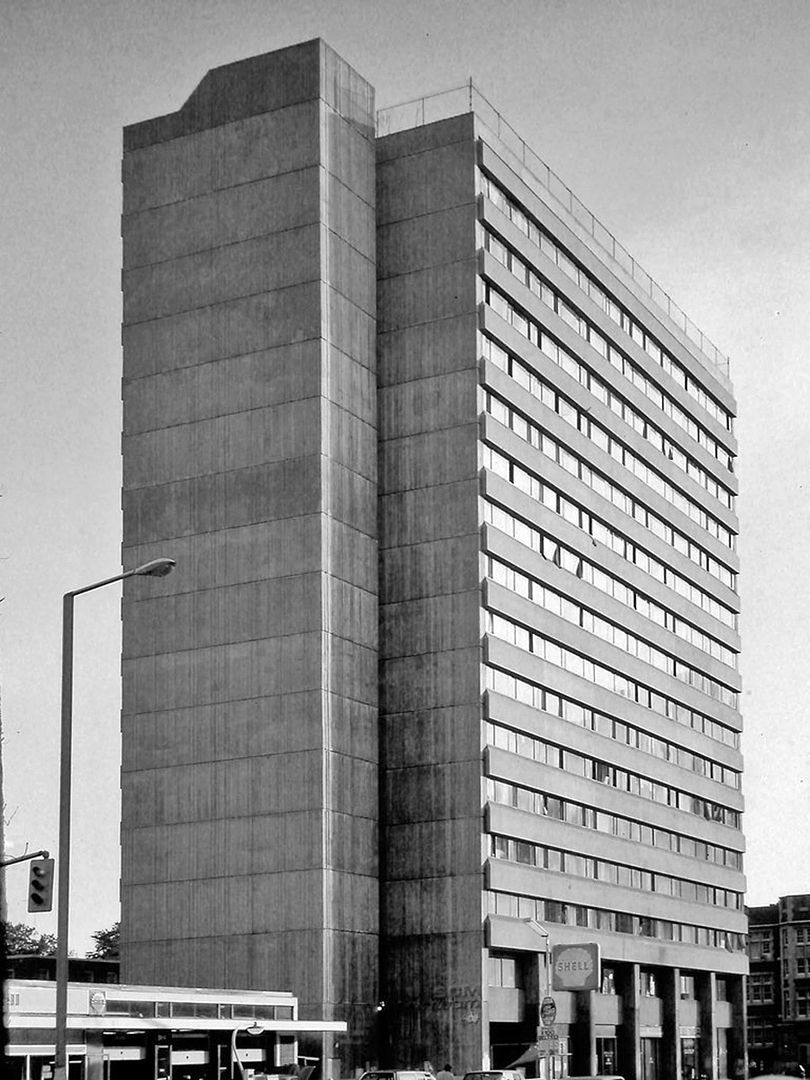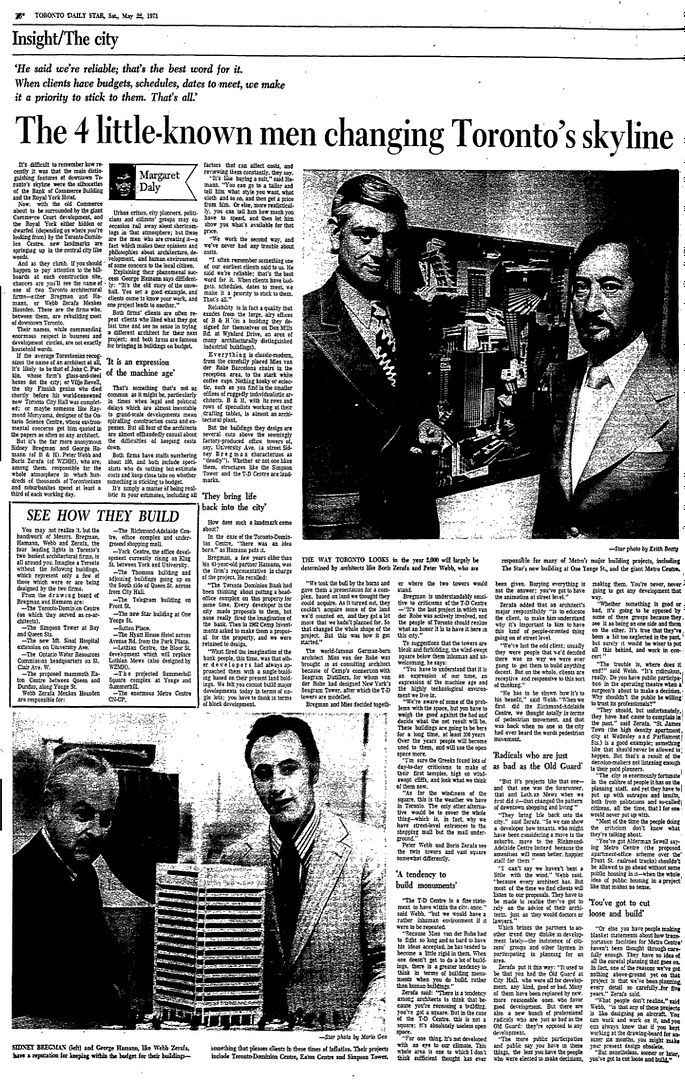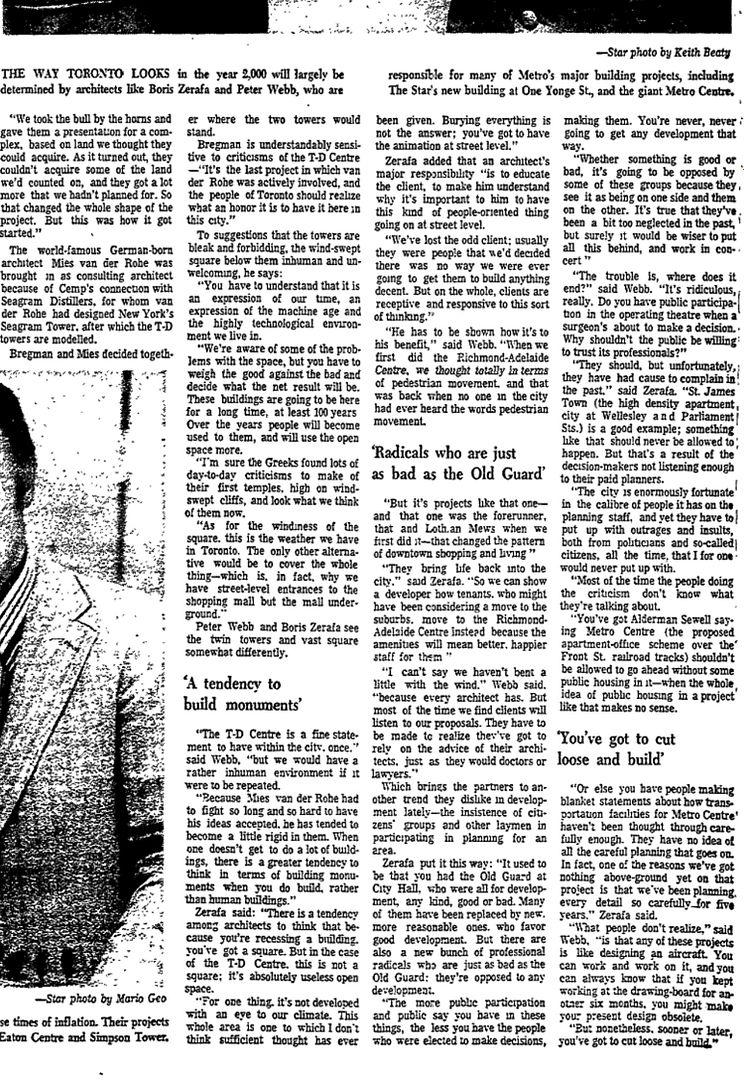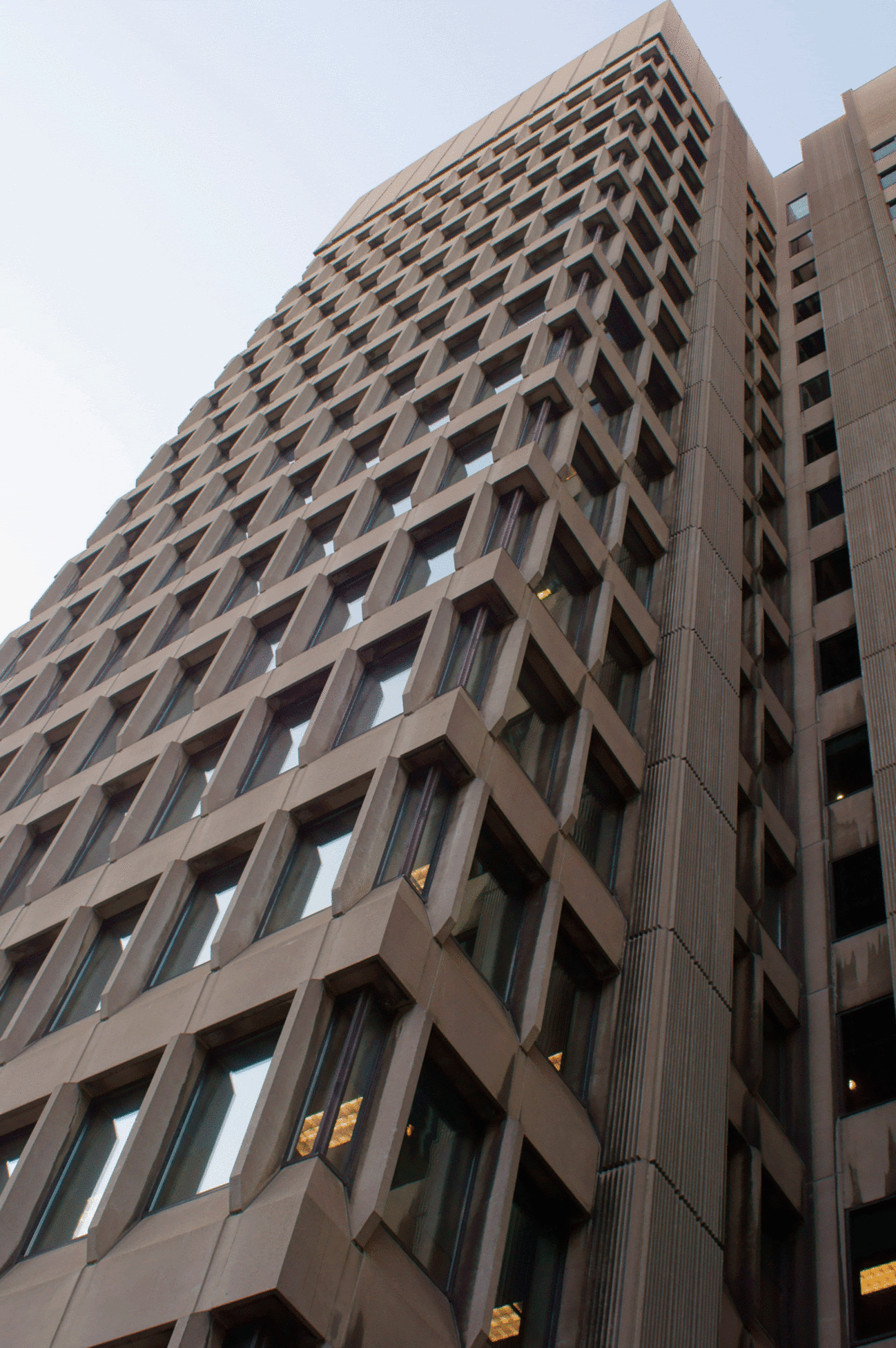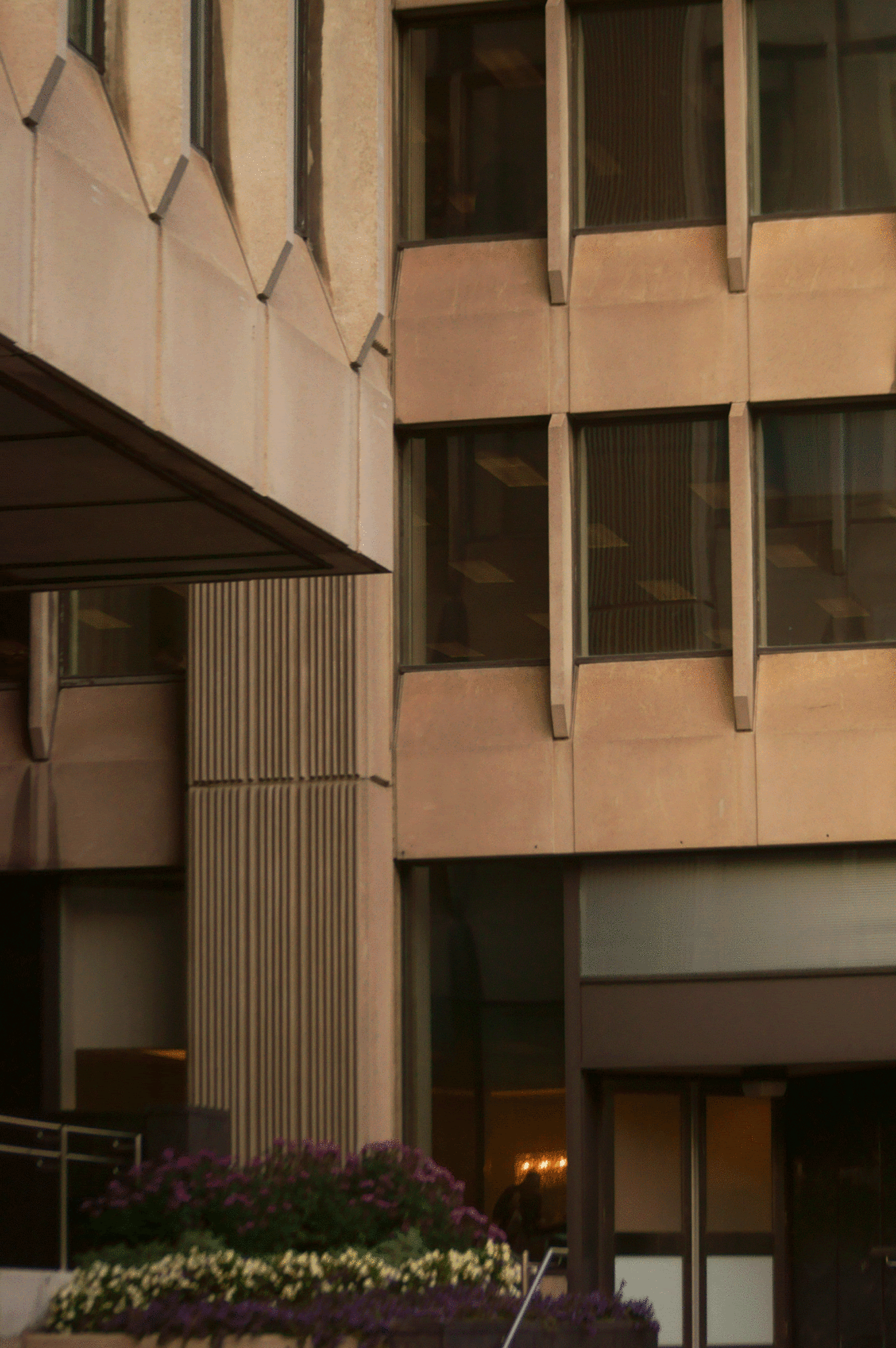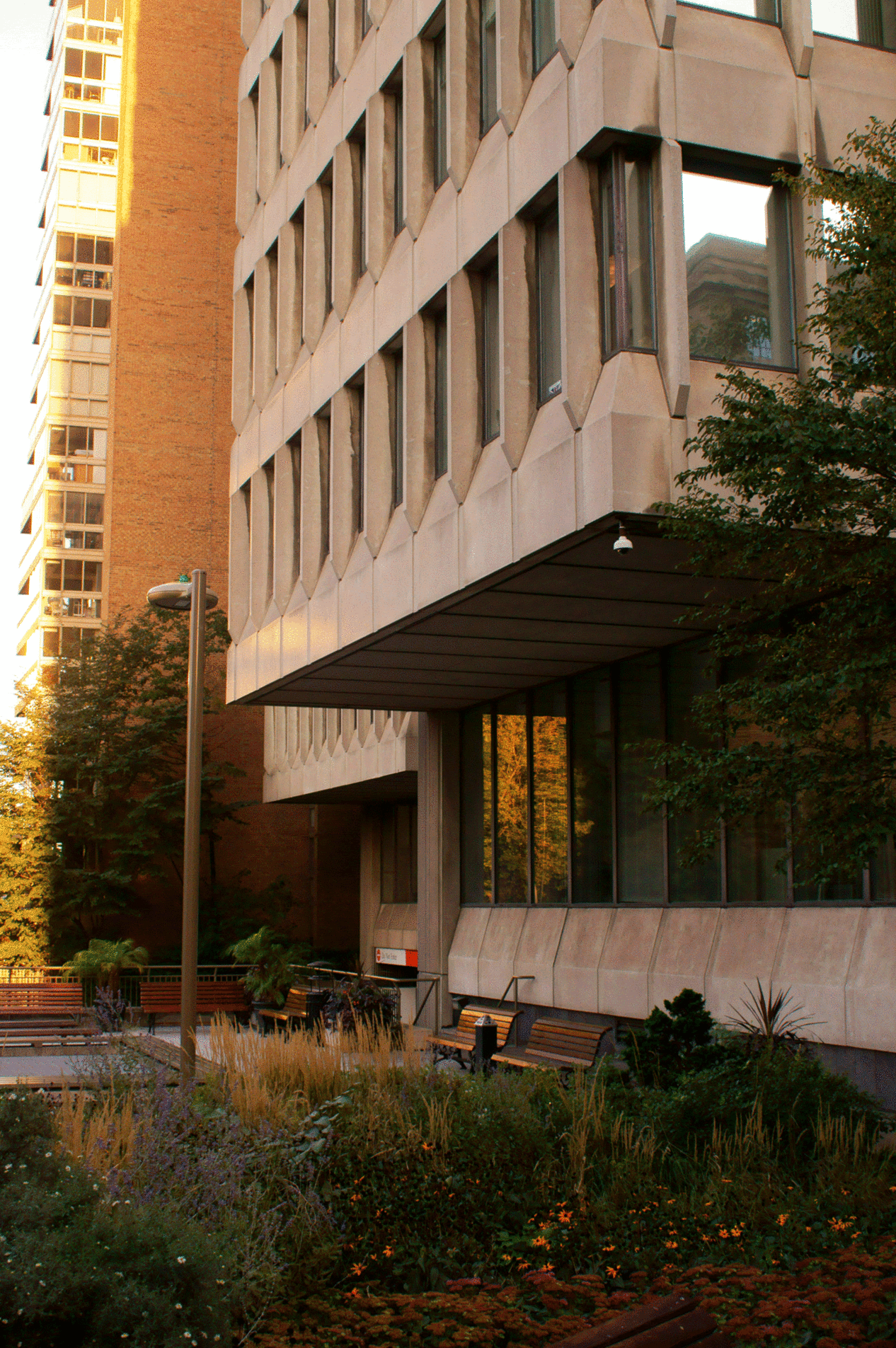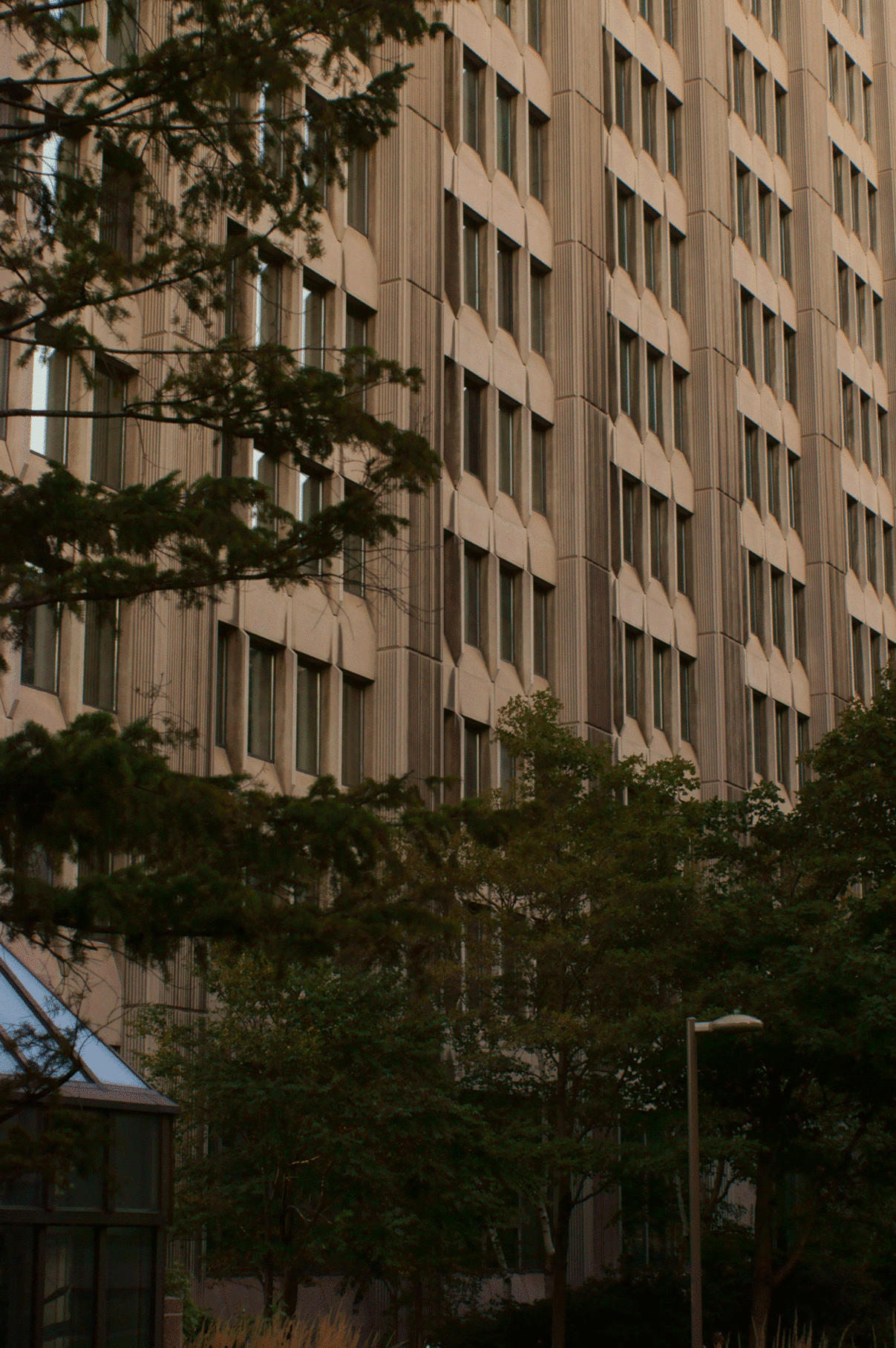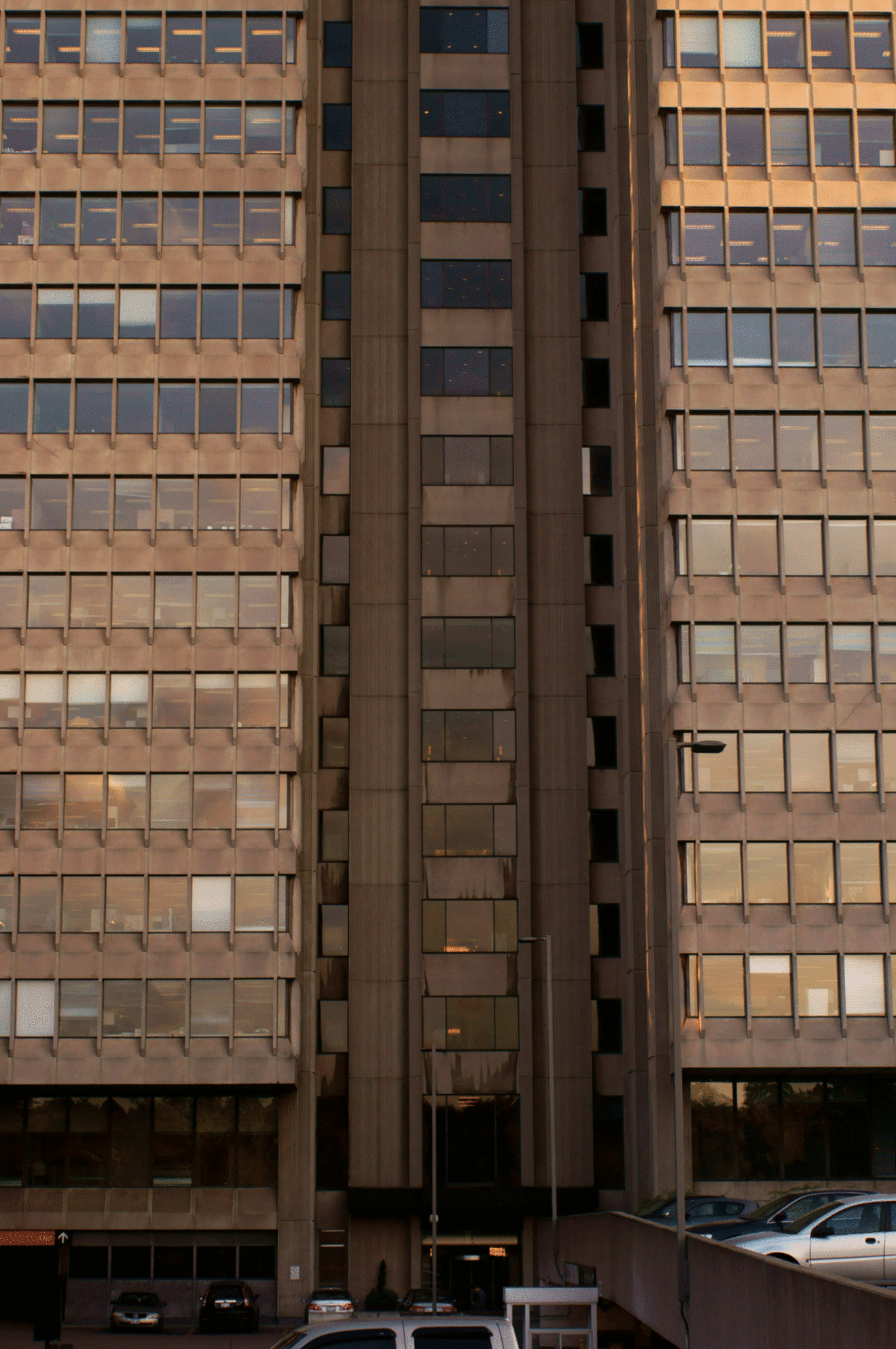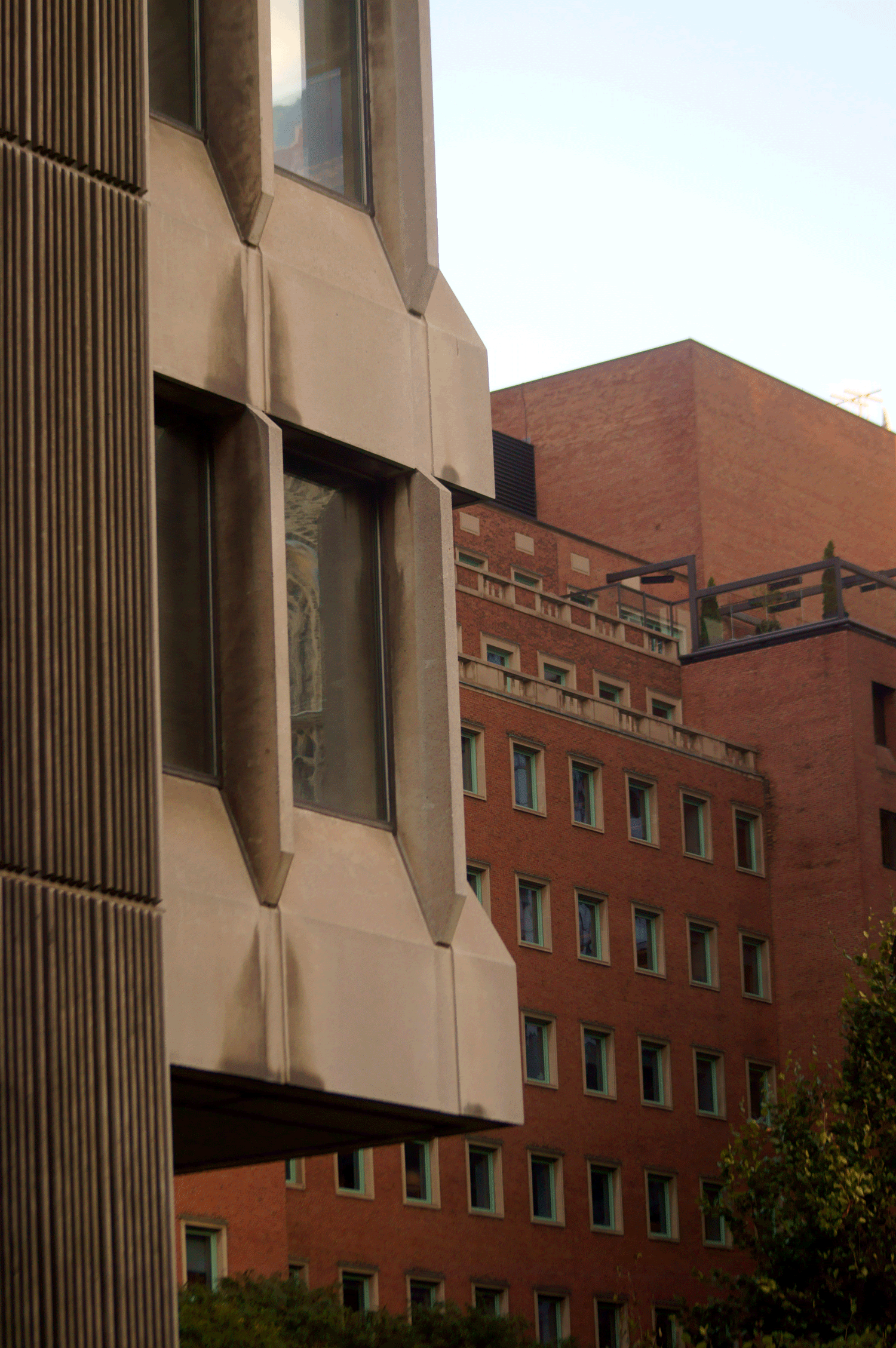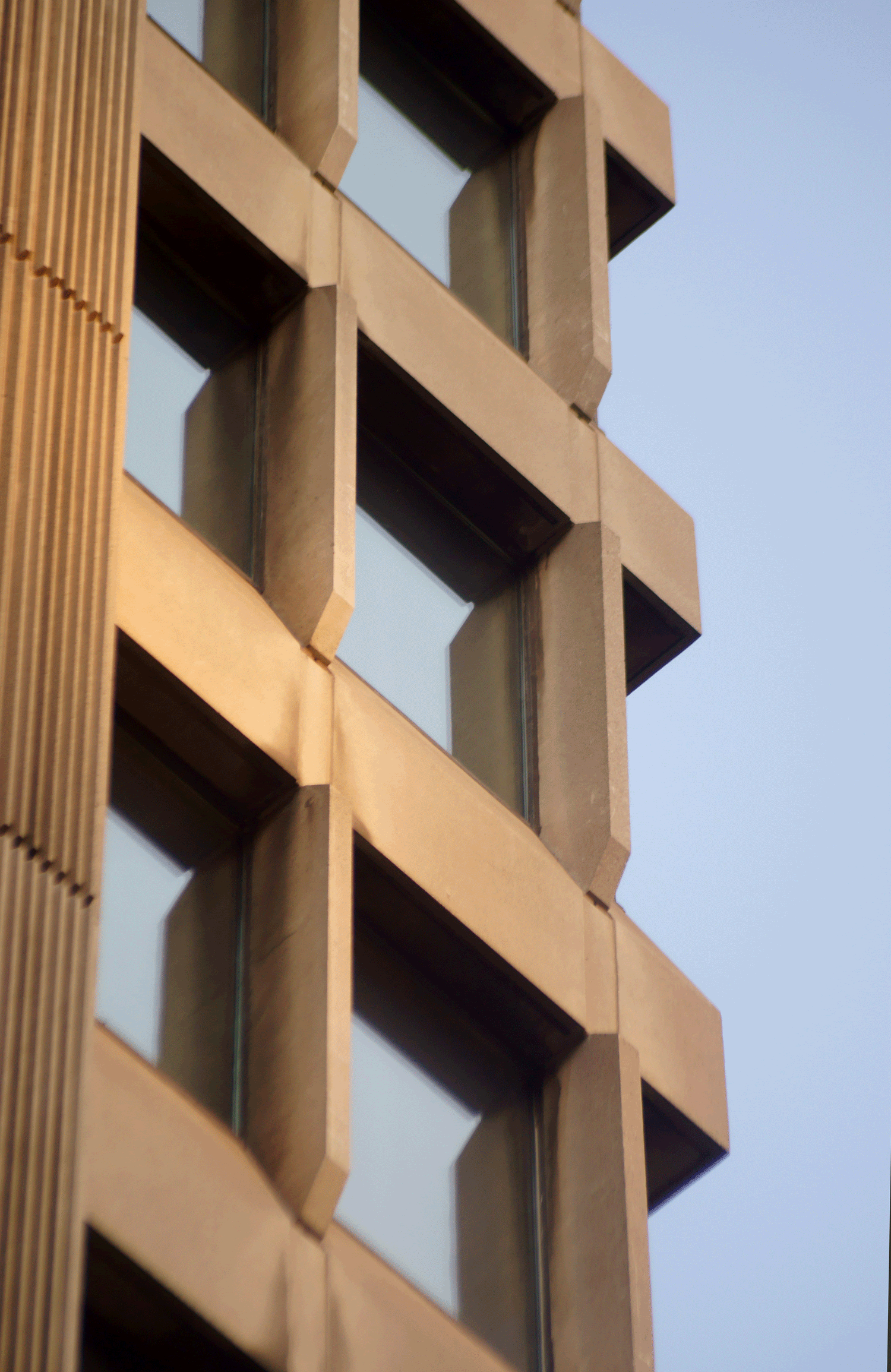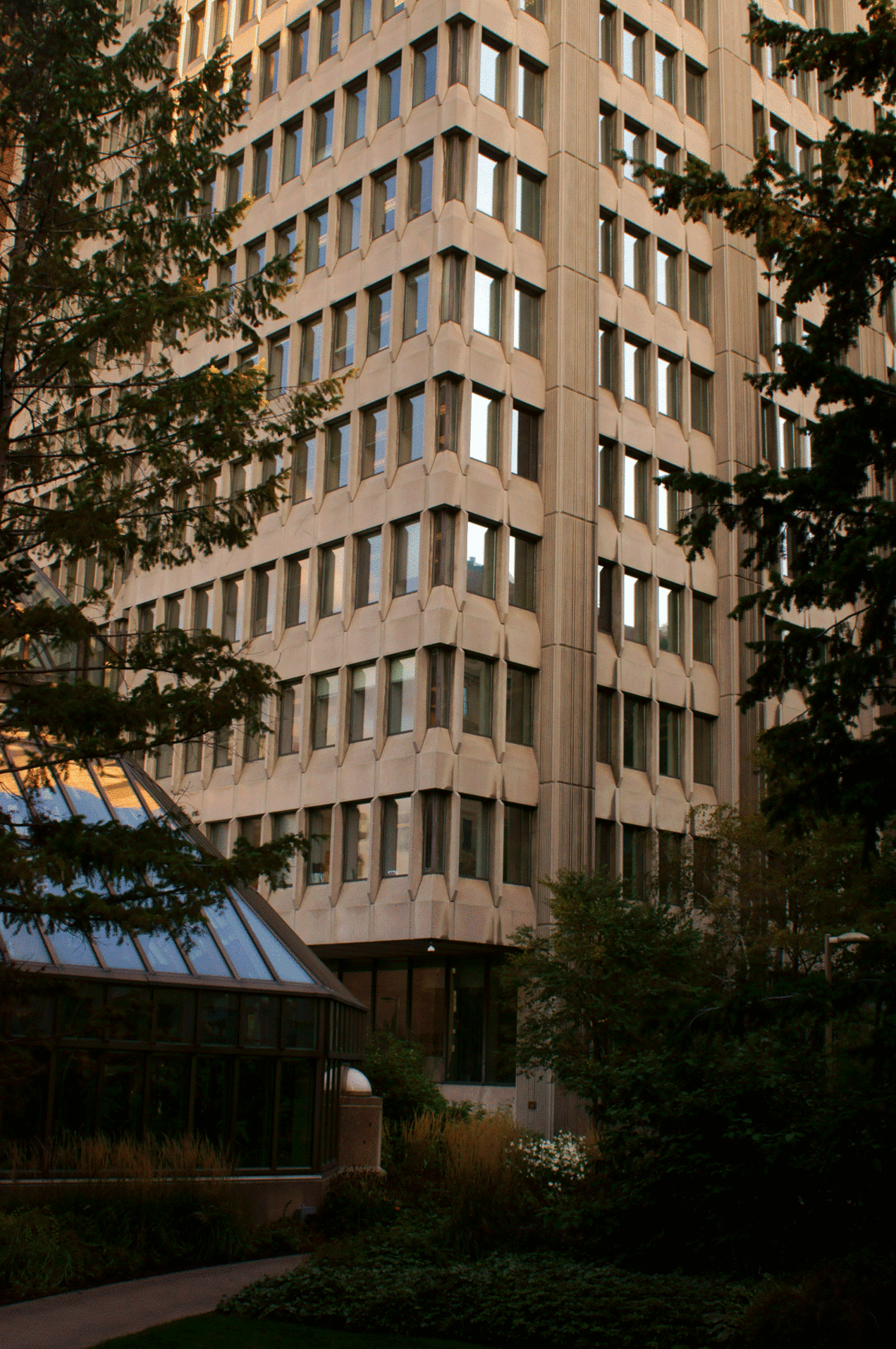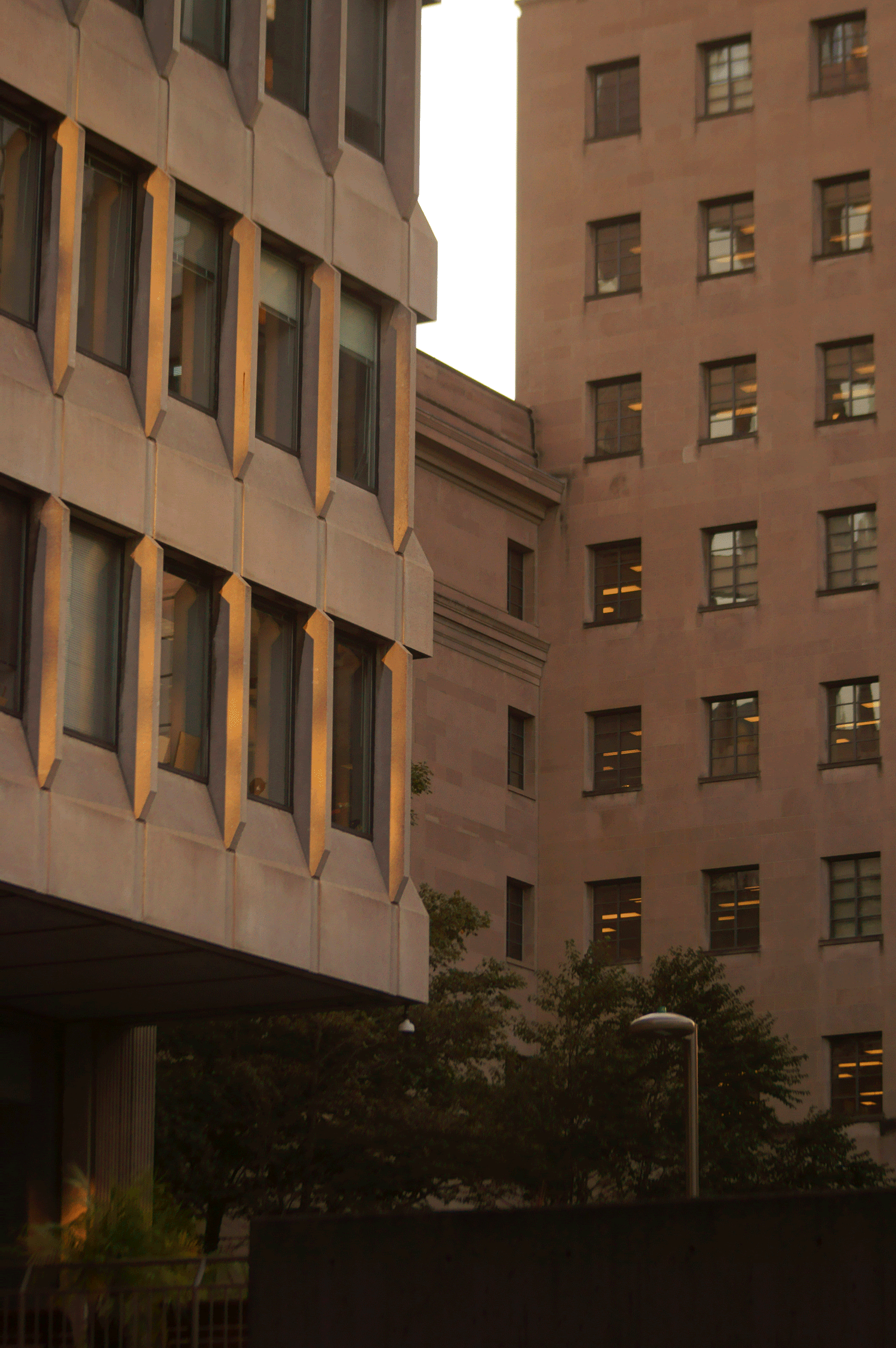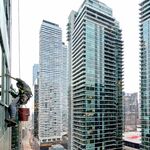Except that by 1965, what you call "expressionistic Modernism of the 1960s" was commonly deemed "dated", at least by professional tastemakers--i.e. to them, it was in fact an "expressionistic Modernism of the 1950s" that met its symbolic "credible" end w/the death of Eero Saarinen. By 1965, it would have been all-too-easy for hypercynical architectural wags to view this as (superficially/inadvertently, of course) a more hifalutin version of 64/65 New York World's Fair cheese; or at least as somethng whose courant-ism was tainted by said cheese.
Actually, I wouldn't be too hard on the City Hall jury for supposedly "populist" decision-making; after all, it was the international cream of its field in the late 50s. However, the presence of Saarinen both within said jury and as the "hot" North American architect of the moment would likely have weighed heavily, all the more so given that it was his reported personal intervention that resulted in the chosen scheme--which just so happened to be a conveniently "more Saarinen than Saarinen" scheme by a fellow Finn. And given that Toronto couldn't have an Eero Saarinen City Hall on account of his being on the jury, this was "the next best thing" (almost like Randall Stout being the next best thing to Gehry relative to the Art Gallery of Alberta in Edmonton).
Which, in the end, shouldn't weigh fatally against City Hall as built--but we're talking about 1958 vs 1965. And in some ways, the taste-fate of this kind of Saarinen/Revell neo-expressionism was not unlike how Jewish Museum/Ground Zero-era Daniel Libeskind was *the* architect of that post-Y2K moment, yet now seems an overwrought artifact of the High Starchitecture age...
